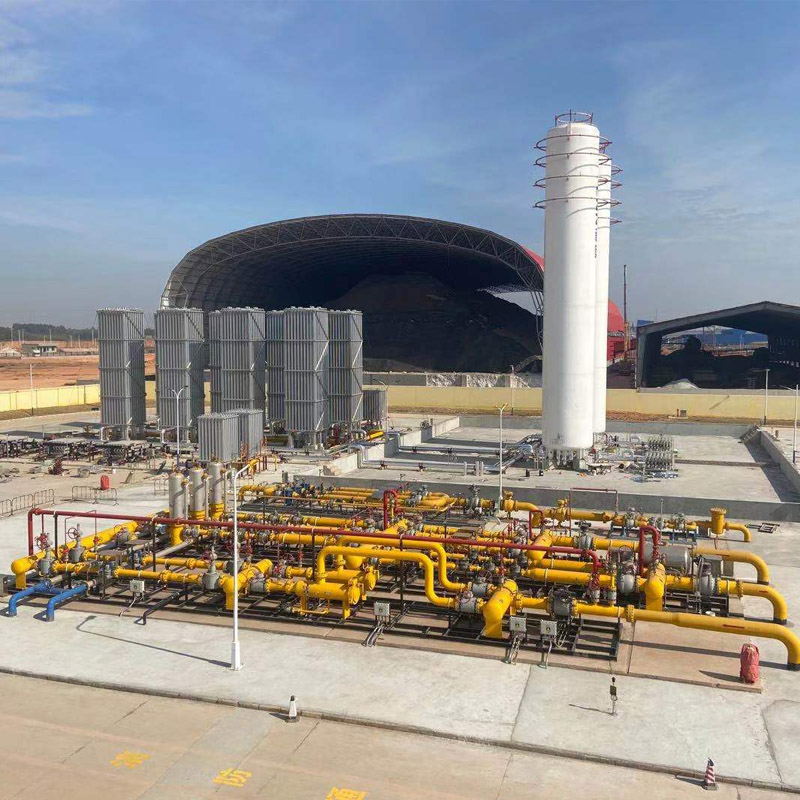
9 月 . 14, 2024 20:11
Back to list
gas safety relief valve
Understanding Gas Safety Relief Valves Importance and Functionality
Gas safety relief valves play a critical role in safeguarding both industrial and residential systems that utilize gas. These valves are designed to prevent dangerous incidents caused by excessive pressure build-up within gas storage and handling systems. In this article, we will explore the importance, functionality, and maintenance of gas safety relief valves.
What is a Gas Safety Relief Valve?
A gas safety relief valve is a safety device that automatically releases gas from a system once the pressure exceeds a predetermined limit. This mechanism helps maintain a safe operating pressure, preventing potential explosions and material failures. The valve is typically installed on gas tanks, pipelines, and pressure vessels to ensure that the internal pressure remains within safe operational limits.
Importance of Gas Safety Relief Valves
1. Preventing Accidents One of the primary functions of a gas relief valve is to avert accidents that could result from over-pressurization. In scenarios where gas is rapidly heated or a line obstruction occurs, the risk of pressure build-up increases significantly. A properly functioning relief valve mitigates these risks, safeguarding personnel, property, and the environment.
2. Regulatory Compliance Many industries must adhere to strict safety regulations that necessitate the use of safety relief valves. The implementation of these devices not only ensures compliance with legal requirements but also reinforces a commitment to safety practices within organizations.
3. Cost Efficiency In addition to preventing accidents, gas safety relief valves can be economically advantageous. By avoiding potential damage to expensive equipment and preventing loss of product, these devices can save organizations significant amounts of money in the long term.
gas safety relief valve

How Gas Safety Relief Valves Work
Gas safety relief valves function based on pressure differentials. The valve is set to open at a specific pressure level, allowing gas to escape safely when this threshold is exceeded. This operation can occur in two main modes spring-loaded and pilot-operated.
- Spring-Loaded Valves These are the most common type of relief valves. They consist of a disk held in place by a spring. When the pressure exceeds the set point, the force exerted by the gas overcomes the spring tension, which opens the valve and allows gas to escape.
- Pilot-Operated Valves These valves use a small pilot valve to control the main valve operation. When the pressure exceeds the set limit, the pilot valve opens, leading to a pressure drop that causes the main valve to open as well. This configuration is usually utilized in high-capacity systems where precise control and larger size are required.
Maintenance of Gas Safety Relief Valves
To ensure the effective operation of gas safety relief valves, regular maintenance is essential. This includes routine testing and inspection to ensure that the valves are functioning correctly, as well as cleaning and replacing any worn parts. Following manufacturer guidelines and adhering to local regulations is crucial for optimal performance.
Conclusion
Gas safety relief valves are indispensable safety devices that protect against the dangers of over-pressurization in gas systems. Their importance cannot be overstated, as they not only prevent accidents but also ensure regulatory compliance and resource efficiency. Regular maintenance and understanding of their functionality are vital in guaranteeing their effectiveness, making them a key component of any gas handling system. Properly maintained gas safety relief valves contribute significantly to workplace safety and a sustainable operating environment.
Next:
Latest news
-
Unlocking The Quality Gas Pressure ReducersNewsNov.01,2024
-
The Role of Gas Pressure Reducing StationsNewsNov.01,2024
-
The Importance and Functionality of Safety Relief ValvesNewsNov.01,2024
-
The Essential Role of Safety Valves in Natural Gas ApplicationsNewsNov.01,2024
-
The Essential Role of Gas Pressure RegulatorsNewsNov.01,2024
-
Enhance Your Premium Gas FiltersNewsNov.01,2024

